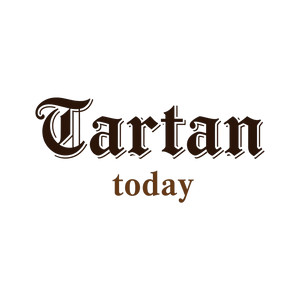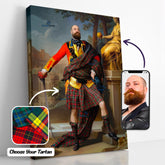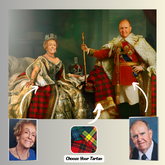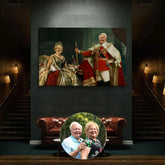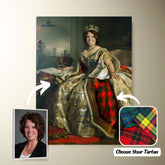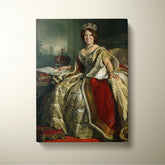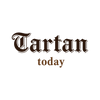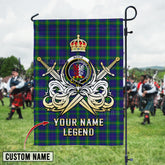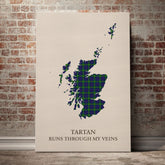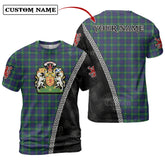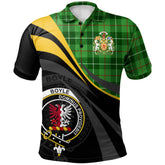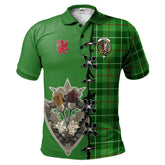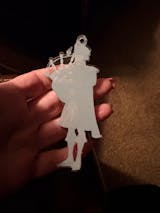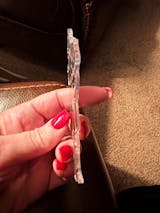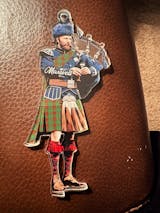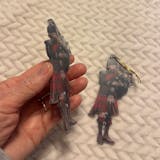-
Personalized Clan Boyle Tartan Bagpipe Ornament with Custom Name – Scottish Christmas Tree Decoration CQ90
Personalized Clan Boyle Tartan Bagpipe Ornament with Custom Name – Scottish Christmas Tree Decoration CQ90Celebrate your Scottish heritage with this unique wood & acrylic tartan ornament. Perfect as a personalized Christmas decoration or a meaningful gift for friends and relatives on special occasions such...- From $19.99 USD
$25.99 USD- From $19.99 USD
- Unit price
- per
Save $6.00 -
Personalized Clan Boyle Tartan Drummer Ornament with Custom Name – Scottish Christmas Tree Decoration OM76
Personalized Clan Boyle Tartan Drummer Ornament with Custom Name – Scottish Christmas Tree Decoration OM76Celebrate your Scottish heritage with this unique wood & acrylic tartan ornament. Perfect as a personalized Christmas decoration or a meaningful gift for friends and relatives on special occasions such...- From $19.99 USD
$25.99 USD- From $19.99 USD
- Unit price
- per
Save $6.00 -
Clan Boyle Tartan Crest Keychain AI48 - Boyle Tartan Clan
Boyle Tartan Clan Crest Keychain AI48 Product detail: This personalized keychain for pictures are the perfect choice for a fun gift idea, the choice is yours to come up with a surprise for someone you love. The keychain is made of PMMA, environmentally, friendly,...- From $15.25 USD
- From $15.25 USD
- Unit price
- per
-
Boyle Tartan Clan
-
Personalized Clan O'Boyle Reproduction Tartan Bagpipe Ornament with Custom Name – Scottish Christmas Tree Decoration KP77
Personalized Clan O'Boyle Reproduction Tartan Bagpipe Ornament with Custom Name – Scottish Christmas Tree Decoration KP77Celebrate your Scottish heritage with this unique wood & acrylic tartan ornament. Perfect as a personalized Christmas decoration or a meaningful gift for friends and relatives on special occasions...- From $19.99 USD
$25.99 USD- From $19.99 USD
- Unit price
- per
Save $6.00 -
Personalized Clan O'Boyle Modern Tartan Bagpipe Ornament with Custom Name – Scottish Christmas Tree Decoration PE59
Personalized Clan O'Boyle Modern Tartan Bagpipe Ornament with Custom Name – Scottish Christmas Tree Decoration PE59Celebrate your Scottish heritage with this unique wood & acrylic tartan ornament. Perfect as a personalized Christmas decoration or a meaningful gift for friends and relatives on special occasions...- From $19.99 USD
$25.99 USD- From $19.99 USD
- Unit price
- per
Save $6.00 -
Personalized Clan O'Boyle Ancient Tartan Bagpipe Ornament with Custom Name – Scottish Christmas Tree Decoration CC76
Personalized Clan O'Boyle Ancient Tartan Bagpipe Ornament with Custom Name – Scottish Christmas Tree Decoration CC76Celebrate your Scottish heritage with this unique wood & acrylic tartan ornament. Perfect as a personalized Christmas decoration or a meaningful gift for friends and relatives on special occasions...- From $19.99 USD
$25.99 USD- From $19.99 USD
- Unit price
- per
Save $6.00 -
Personalized Clan Boyle Tartan Bagpipe Ornament with Custom Name – Scottish Christmas Tree Decoration IJ91
Personalized Clan Boyle Tartan Bagpipe Ornament with Custom Name – Scottish Christmas Tree Decoration IJ91Celebrate your Scottish heritage with this unique wood & acrylic tartan ornament. Perfect as a personalized Christmas decoration or a meaningful gift for friends and relatives on special occasions such...- From $19.99 USD
$25.99 USD- From $19.99 USD
- Unit price
- per
Save $6.00 -
Personalized Clan Boyle Clan Crest Tartan Santa Ornament – Custom Acrylic Christmas Decoration YR84 - Boyle
Personalized Clan Boyle Clan Badge Tartan Ornament – Custom Acrylic Christmas Decoration YR84Celebrate your Scottish heritage with this unique wood & acrylic tartan ornament. Perfect as a personalized Christmas decoration or a meaningful gift for friends and relatives on special occasions such as Christmas,...- From $19.99 USD
- From $19.99 USD
- Unit price
- per
-
Boyle
-
Personalized Clan O-Boyle Modern Tartan Santa Ornament – Custom Acrylic Christmas Decoration UA92 - O-Boyle
Personalized Clan O-Boyle Modern Tartan Ornament – Custom Acrylic Christmas Decoration UA92Celebrate your Scottish heritage with this unique wood & acrylic tartan ornament. Perfect as a personalized Christmas decoration or a meaningful gift for friends and relatives on special occasions such as Christmas, Valentine’s...- From $19.99 USD
- From $19.99 USD
- Unit price
- per
-
O-Boyle
-
Personalized Clan O-Boyle Weathered Tartan Santa Ornament – Custom Acrylic Christmas Decoration CH93 - O-Boyle
Personalized Clan O-Boyle Weathered Tartan Ornament – Custom Acrylic Christmas Decoration CH93Celebrate your Scottish heritage with this unique wood & acrylic tartan ornament. Perfect as a personalized Christmas decoration or a meaningful gift for friends and relatives on special occasions such as Christmas, Valentine’s...- From $19.99 USD
- From $19.99 USD
- Unit price
- per
-
O-Boyle
-
Custom Name Clan Boyle Tartan Garden Flag with Clan Crest and the Golden Sword of Courageous Legacy RQ19 - Boyle
Custom Name Clan Boyle Tartan Garden Flag with Clan Crest and the Golden Sword of Courageous Legacy RQ19 Immerse your space in the rich heritage of Scotland with our Tartan Garden Flags, exclusively from Tartan Today. Featuring vibrant tartan and Scottish heritage designs, these garden...- From $34.45 USD
- From $34.45 USD
- Unit price
- per
-
Boyle
-
Clan Boyle Tartan Scotland Map Canvas “Tartan Runs Through My Veins” Wall Art MQ65
Clan Boyle Tartan Scotland Map Canvas “Tartan Runs Through My Veins” Wall Art MQ65Celebrate your Scottish heritage with this striking canvas print featuring the map of Scotland filled with Boyle tartan, paired with the bold phrase: “Tartan Runs Through My Veins.” Whether you're honoring...- From $35.05 USD
- From $35.05 USD
- Unit price
- per
-
Personalized Clan Boyle Tartan Shirt with Scotland Coat of Arms & Custom Name UD71 - Boyle
Boyle Tartan Shirt with Scotland Coat of Arms & Custom Name UD71Celebrate your Scottish heritage with this Boyle Tartan Shirt with Scotland Coat of Arms & Custom Name UD71, featuring a bold Scotland Coat of Arms and your custom name on the back. Made...- From $39.54 USD
- From $39.54 USD
- Unit price
- per
-
Boyle
-
Clan Boyle Tartan Custom Face Hawaiian Shirt – Unisex Gift for Family Members, Summer Party CR93 - Boyle Tartan
Clan Boyle Tartan Custom Face Hawaiian Shirt – Unisex Gift for Family Members, Summer Party CR93?? Stand out with our custom face Hawaiian shirt featuring your chosen tartan pattern and up to 10 faces printed for free! Whether it's your own, your pet's, or...- $42.25 USD
$59.99 USD- $42.25 USD
- Unit price
- per
Save $17.74-
Boyle Tartan
-
Clan Boyle Tartan Flat Cap YN77 - Clan Boyle Tartan
Clan Boyle Tartan Flat Cap YN77Elevate Your Heritage: The Authentic Tartan Jeff Cap Step into a legacy of timeless style and comfort with our Authentic Tartan Flat Cap. Crafted for the discerning American who cherishes their Scottish roots and appreciates classic elegance, this isn’t just...- From $33.85 USD
$45.59 USD- From $33.85 USD
- Unit price
- per
Save $11.74-
Clan Boyle Tartan
-
Clan Boyle Tartan Crest, Badges, Heraldry, Clans, Family Scotland PNG, Digital ClipArt High Quality IX30
Clan Boyle Tartan Crest, Badges, Heraldry, Clans, Family Scotland PNG, Digital ClipArt High Quality IX30 DIGITAL FILE ONLY* ** This listing is an INSTANT DIGITAL DOWNLOAD, not a physical item. An instant download is a digital file you can download and use immediately **...- $3.49 USD
$5.99 USD- $3.49 USD
- Unit price
- per
Save $2.50 -
Clan O'Boyle Tartan Polo Shirt TQ31 - O'Boyle Tartan
Clan O'Boyle Tartan Polo Shirt TQ31 Description: Crafted in 100% polyester with your own design which combines comfort and vogue. This shirt has some'great features, it has 3 buttons, elastic collar and cuffs. 12.35 Oz. Made from polyester fabric. 3 buttons, elastic collar and...- $38.25 USD
- $38.25 USD
- Unit price
- per
-
O'Boyle Tartan
-
Clan Boyle Tartan Polo Shirt - Royal Coat Of Arms Style DI34 - Boyle Tartan
Clan Boyle Tartan Polo Shirt - Royal Coat Of Arms Style DI34 Description: Crafted in 100% polyester with your own design which combines comfort and vogue. This shirt has some'great features, it has 3 buttons, elastic collar and cuffs. 12.35 Oz. Made from polyester...- $38.25 USD
- $38.25 USD
- Unit price
- per
-
Boyle Tartan
-
Clan Boyle Tartan Polo Shirt - Lion Rampant And Celtic Thistle Style LA64 - Boyle Tartan
Clan Boyle Tartan Polo Shirt - Lion Rampant And Celtic Thistle Style LA64 Description: Crafted in 100% polyester with your own design which combines comfort and vogue. This shirt has some'great features, it has 3 buttons, elastic collar and cuffs. 12.35 Oz. Made from...- $38.25 USD
- $38.25 USD
- Unit price
- per
-
Boyle Tartan
-
Clan Boyle Tartan Polo Shirt - Alba Celtic Style JI88 - Boyle Tartan
Clan Boyle Tartan Polo Shirt - Alba Celtic Style JI88 Description: Crafted in 100% polyester with your own design which combines comfort and vogue. This shirt has some'great features, it has 3 buttons, elastic collar and cuffs. 12.35 Oz. Made from polyester fabric. 3...- $38.25 USD
- $38.25 USD
- Unit price
- per
-
Boyle Tartan
Ex: Your Tartan + Product
Popular Products
Turn Me Royal Personalized Portrait from Your Photo, Custom Tartan. Custom Canvas Wall Art as Gift for Men
- From $32.45 USD
- From $32.45 USD
- Unit price
- / per
Royalty Couple Personalized Portrait from Your Photo, Custom Tartan. Custom Canvas Wall Art
- From $47.45 USD
- From $47.45 USD
- Unit price
- / per
The Queen Personalized Portrait from Your Photo, Custom Tartan. Custom Canvas Wall Art as Gift for Women
- From $32.45 USD
- From $32.45 USD
- Unit price
- / per
Which Clan Are You From?
List Of Tartan
-
Clan A
- Abercrombie Tartan
- Aberdeen Tartan
- Abernethy Tartan
- Adair Tartan
- Adam Tartan
- Ayrshire Tartan
- Agnew Tartan
- Aikenhead Tartan
- Ainslie Tartan
- Aiton Tartan
- Allan Tartan
- Alexander Tartan
- Allardice Tartan
- Allison Tartan
- Anderson Tartan
- Angus Tartan
- Anstruther Tartan
- Arbuthnot Tartan
- Armstrong Tartan
- Arnott Tartan
- Auchinleck Tartan
- Ayrshire Tartan
-
Clan B
- Baillie Tartan
- Bain Tartan
- Baird Tartan
- Balfour Tartan
- Bannatyne Tartan
- Bannerman Tartan
- Barclay Tartan
- Baxter Tartan
- Beaton Tartan
- Bell Tartan
- Belshes Tartan
- Bethune Tartan
- Beveridge Tartan
- Binning Tartan
- Bisset Tartan
- Blackadder Tartan
- Blackstock Tartan
- Black Watch Tartan
- Blair Tartan
- Blane Tartan
- Blyth Tartan
- Borthwick Tartan
- Boswell Tartan
- Bowie Tartan
- Boyd Tartan
- Boyle Tartan
- Brisbane Tartan
- Brodie Tartan
- Brown/ Broun Tartan
- Bruce Tartan
- Buccleuch Tartan
- Buchan Tartan
- Buchanan Tartan
- Burnett Tartan
- Burns Tartan
- Butter Tartan
- Byres Tartan
-
Clan C
- Cairns Tartan
- Calder Tartan
- Callander Tartan
- Cameron Tartan
- Campbell Tartan
- Campbell of Breadalbane Tartan
- Campbell of Cawdor Tartan
- Carmichael Tartan
- Carnegie Tartan
- Carruthers Tartan
- Cathcart Tartan
- Chalmers Tartan
- Charteris Tartan
- Chattan Tartan
- Cheyne Tartan
- Chisholm Tartan
- Christie Tartan
- Clark Tartan
- Clelland Tartan
- Clephan Tartan
- Clergy Tartan
- Cochrane Tartan
- Cockburn Tartan
- Colquhoun Tartan
- Colville Tartan
- Cooper Tartan
- Couper Tartan
- Craig Tartan
- Cranstoun Tartan
- Crawford Tartan
- Crichton Tartan
- Crief District Tartan
- Crosbie Tartan
- Cumming Tartan
- Cunningham Tartan
- Currie Tartan
- Clan D
- Clan E
- Clan F
- Clan G
- Clan H
- Clan I
- Clan J
- Clan K
- Clan L
-
Clan M
- Maitland Tartan
- Malcolm Tartan
- Mar Tartan
- Marjoribanks Tartan
- Maxtone Tartan
- Matheson Tartan
- Maule Tartan
- Maxwell Tartan
- Meldrum Tartan
- Melville Tartan
- Menzies Tartan
- Mercer Tartan
- Middleton Tartan
- Moffat Tartan
- Moncrieffe Tartan
- Montgomery Tartan
- Monypenny Tartan
- Moncreiffe Tartan
- Monteith Tartan
- Morrison Tartan
- Mouat Tartan
- Moubray Tartan
- Mow Tartan
- Muir_More Tartan
- Muirhead Tartan
- Munro Tartan
- Murray Tartan
- Murray of Atholl Tartan
-
Clan Mc/Mac
- MacAlister Tartan
- MacArthur Tartan
- MacAlpine Tartan
- MacAulay Tartan
- MacBain Tartan
- MacBean Tartan
- MacBeth Tartan
- MacCallum Tartan
- MacCraig Tartan
- MacColl Tartan
- MacCorquodale Tartan
- MacDiarmid Tartan
- MacDonald Tartan
- MacDonald of Clanranald Tartan
- MacDonald of Sleat Tartan
- MacDonnell of Glengarry Tartan
- MacDonnell of Keppoch Tartan
- MacDougall Tartan
- MacDowall Tartan
- MacDuff Tartan
- MacEwen_MacEwan Tartan
- MacEdward Tartan
- MacFarlane Tartan
- MacGill Tartan
- MacGillivray Tartan
- MacGregor Tartan
- MacGowan (McGowan) Tartan
- MacHardy Tartan
- MacIan Tartan
- MacInnes Tartan
- MacIntyre Tartan
- MacKay Tartan
- MacKillop Tartan
- MacKellar Tartan
- Mackinlay Tartan
- MacKenzie Tartan
- Mackie Tartan
- MacKinnon Tartan
- MacKintosh / MacIntosh Tartan
- MacLeod Tartan
- MacMillan Tartan
- MacNab Tartan
- MacNaughton Tartan
- MacNeil / MacNeill Tartan
- MacNeil of Colonsay Tartan
- MacNicol Tartan
- MacPhail Tartan
- MacPhee_MacFie Tartan
- MacPherson Tartan
- MacQuarrie Tartan
- MacQueen Tartan
- MacRae Tartan
- MacRow Tartan
- MacSporran Tartan
- MacTaggart Tartan
- MacTavish Tartan
- MacThomas Tartan
- McCorquodale Tartan
- McCulloch Tartan
- McFadzen Tartan
- McGeachie Tartan
- McIver Tartan
- McKerrell Tartan
- Clan N
- Clan O
- Clan P
- Clan R
-
Clan S
- Sandilands Tartan
- Scott Tartan
- Scrymgeour Tartan
- Selkirk Tartan
- Sempill Tartan
- Seton Tartan
- Shaw Tartan
- Shepherd Tartan
- Sinclair Tartan
- Skene Tartan
- Skirving Tartan
- Smith Tartan
- Somerville Tartan
- Spalding Tartan
- Spens Tartan
- Spottiswood Tartan
- Stevenson Tartan
- Stewart Tartan
- Stewart of Appin Tartan
- Stirling Tartan
- Strachan Tartan
- Straiton Tartan
- Strange Tartan
- Strathclyde District Tartan
- Stuart of Bute Tartan
- Sutherland Tartan
- Swinton Tartan
- Clan T
- Clan U W Y
- Request Your Clan
Clan Boyle (Boyle Tartan)
1. About Clan Boyle (Boyle Tartan)
2. Clan Boyle History (Boyle Tartan)
Invading Britain in 1066, the family 'de Boyville' established in a number of places after leaving the Norman town of Beauville near Caen. especially in Wales and Cumberland.
The lands of Cunningham and Largs were given to Hugh de Morvile by King David in 1124. He divided these holdings among his kin, giving the de Boyvilles ownership of Kelburn.
In the year 1164, David de Boivil was a witness to a charter. In 1196, the male line died out, and the Lords of Galloway received the estate.
In 1234, when this line similarly failed to leave a male heir, the territory was given to the crown.
At the Battle of Largs in 1263, the family assisted Alexander III in driving out the Vikings, and as a result, the family was given the lands of Kelburn.
In 1291, Henry de Boyville served as the keeper of Dumfries, Wigtown, and Kirkcudbright castles. In 1296, three de Boyvils signed King Edward's Ragman Roll.
Despite appearing to be under English rule, the Boyle family continued to fight in the Scottish Wars of Independence, losing sons in the Battle of Sauchieburn for James III and at the Battle of Bannockburn in 1314. At Pinkie in 1547, they also fought for the Scots.
The family lands were once more forfeited during the battle of Sauchieburn, but James IV's restoration of the monarchy allowed them to be recovered.
The family chose to support Mary, Queen of Scots and then Charles I, which did not enhance their income. The Boyle fortune increased, nevertheless, once John Boyle of Kelburn was chosen to serve as a Commissioner of Parliament in 1681.
The Boyle family prospered during the 17th century through shipping and shipbuilding. David, the son of John, likewise rose to the ranks of Privy Council member and Commissioner of Parliament before becoming Earl of Glasgow in 1703 and Lord Boyle of Kelburn in 1699.
He served on the commission for the Act of Union in 1706 and was made Lord High Commissioner to the General Assembly of the Church of Scotland.
David was suspected of paying off Jacobite followers to back the Act of Union. He organized a force in 1715 to battle the Jacobites since he was a strong Hanoverian.
A distinguished military career was led by John Boyle, 3rd Earl of Glasgow. In 1745 in the Battle of Fontenoy and in 1747 at the Battle of Lauffeld, he sustained injuries.
For nine years, he served as the General Assembly's Lord High Commissioner. First Earl's daughter Lady Jean later wed Sir James Campbell, another Fontenoy combatant. In 1782, their son assumed control of the Campbell of Loudoun earldom.
In 1891, Lord Frederick Fitz-Clarence, the son of William IV, wed Lady Augusta Boyle, the fourth Earl's daughter. In July 1807, John, Son of the Fourth Earl, a naval officer, engaged in combat with the French close to Gibraltar.
He fiercely engaged the enemy, but the French boarded his ship and took him prisoner. Since John never wed, James, his younger brother, became the Earl in 1843.
He pursued a maritime career and was appointed Lord Lieutenant of Renfewshire, just like his older brother.
He wed in 1821, but the union produced no offspring. His half-brother George Frederick Boyle succeeded him as the sixth Earl, and the family's wealth drastically declined.
The Pre-Raphaelite movement had a significant impact on George Boyle, who launched a huge program of church construction throughout Scotland.
By 1888, he owed a million pounds as a result of the enormous expense, which forced the estate into bankruptcy.
His property was up for auction, but his cousin, who would eventually become the seventh Earl, intervened to keep Kelburn from being sold. In 1897, Sir David Boyle, 7th Earl, who was also a naval commander, was elevated to the rank of Baron Fairlie of Fairlie. From 1892 until 1897, he served as the governor of New Zealand.
The current head of the name succeeded his father in 1984 and is now the eleventh Earl of Glasgow. He continues to reside at Kelburn Castle in the Ayrshire town of Fairlie.
North Ayrshire's Kelburn Castle. The Boyles have owned the Kelburn lands since the 1100s, and they have had a fortress there since the 13th century, in one form or another. The Boyle chief's residence is still the castle.
3. Clan Boyle Tartans
The Galloway and Ulster District tartans, which represent the regions where the name was historically found, are acceptable for anyone linked with the name Boyle to wear even though there is no officially recognized Boyle tartan.
As a known sept of Clan Donald, Boyles may also choose to wear MacDonald tartans.
Galloway Red
Galloway District
Ulster District
MacDonald Modern
4. Clan Boyle Crest & Coats of Arms
4.1 Clan Boyle Crest
Worn by all of the name and ancestry
4.2 Clan Boyle Coat of Arms
Note on Coats of Arms: A coat of arms is given to an individual under Scottish heraldic law (with the exception of civic or corporate arms). A 'family coat of arms' does not exist.
With the exclusions listed above, the weapons depicted below are personal weapons. The only person authorized to use these weapons is the grantee.
5. Clan Boyle Places & People
5.1 Clan Boyle Places
5.1.1 Kelburn Castle
The Boyle family has owned the Kelburn estate in North Ayrshire from the 12th century, and they have held a fortress there since at least the middle of the 1250s.
The current Kelburn Castle was first constructed in the 1500s, and over the following centuries, most notably in the 1700s and 1800s, extensions were completed. The Boyle Earls of Glasgow continue to reside in the castle.
5.1.2 Rowallan Castle
East Ayrshire's Rowallan Castle, built in the 16th century, was once a Boyles stronghold. The Campbells are now in charge of the castle, nevertheless.
5.2 Clan Boyle People
Jimmy Boyle (born 1944, Glasgow)
Boyle, who was formerly thought to be the most violent person in Scotland, was given a life term in prison in 1967 for the murder of William "Babs" Rooney, a member of another gang. Boyle, however, maintains that he did not carry out this crime.
While housed at Barlinnie Prison's special section, he resorted to art and authored an autobiography titled A Sense of Freedom, which has subsequently been made into a movie.
He relocated to Edinburgh to continue his artistic career after being released from prison. In 1976, he created "Gulliver," the largest concrete sculpture in all of Europe, for The Craigmillar Festival Society.
Along with Hero of the Underworld, Boyle also wrote Pain of Confinement: Prison Diaries. The latter was adapted for the French film La Rage et le Reve des Condamnes, which received the best documentary award at the Fifa Montreal awards in 2002.
- Choosing a selection results in a full page refresh.
